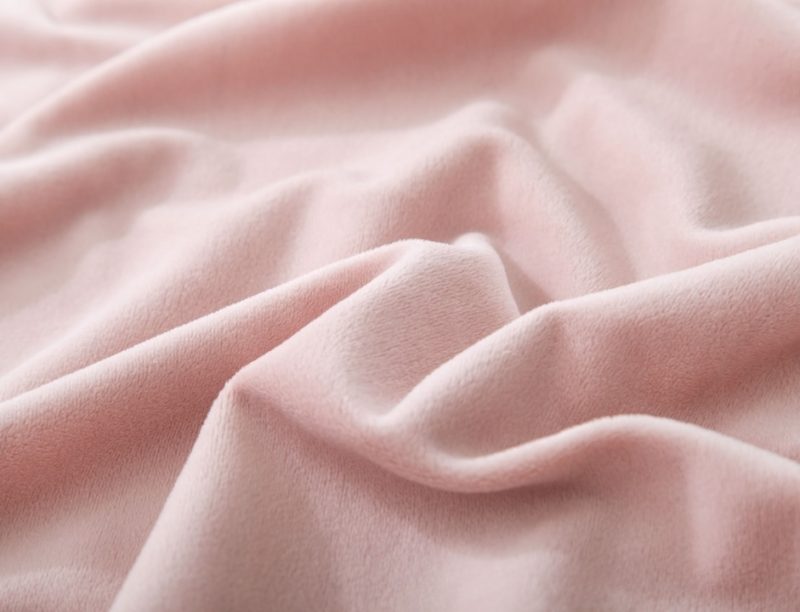This article discusses what does with nap mean in sewing, which refers to following the weave in one direction. We will discuss naps and their importance in sewing preparation in more detail below.
Since the term “with nap” means following the weave direction, you should also know what is grainline in sewing. This way, you’ll know how to cut the fabric with nap or along the grainline when indicated in the sewing pattern.

What Is A Nap In Sewing Terms
When you see the term “with nap” in sewing, it simply refers to arranging all the fabric pieces in the same direction. A napped fabric is a material with a weave in one direction, and you’ll follow this same direction when cutting or arranging all the pattern pieces.
Napped fabrics have their piles woven, so their texture and fibers are aligned in only one direction. On the contrary, if the pattern layouts indicate without a nap, you can cut the pieces regardless of the direction.
The only consideration left will be the fabric’s grainline.
What Does Nap Mean On A Sewing Pattern?
Read the pattern and prepare the fabric requirements, so you’ll have enough material for the nap. Otherwise, you might not have enough fabric for the pattern pieces that you can cut in the same direction.
When the pattern wants the pieces with nap, you will cut them so that the nap goes down the garment away from you. Keep this in mind when you sew the project together since some will inevitably change direction and affect how the garment looks when worn.
How Do You Cut Fabric With A Nap?
- Determine the direction of the nap by running your hand over the fabric and checking which way it feels smooth
- Lay all the pattern pieces out so they’ll be facing the same nap direction
- Most patterns that require fabric cut with a nap will have a pattern layout diagram you can follow
- Use sharp scissors and follow the pattern layout diagram so the fabric will appear uniform when sewn together
- For trickier pieces, use a cutting mat and rotary cutter
Which Types Of Fabrics Have A Nap?
The fabrics with naps include fleece, velvet, faux fur, corduroy, velour, flannel, synthetic suede, Terry cloth, brushed denim, and stretch twill. As you can see, some of them, like the faux fur, will be easy to determine the nap direction since you can see the fibers move in one direction.
Does all fabric have a nap?
Any fabric with a directional appearance or texture is a napped fabric. This means that the material itself can look different if you rub it in one direction or depending on how you hold it up.
Here is how to determine if the fabric has a nap:
- Run your fingers over the material in one direction
- Determine which direction has the fibers feeling flat or smooth; this is the direction of the nap
- The fibers will have more texture if you go against the nap, and this is called the upwards direction
- If you still can’t determine the nap direction, repeat the process of running your hand over it but do so under good lighting
- If the fabric’s color got lighter, then it was the direction of the nap
- If the fabric’s color got darker, you went opposite the nap
- If doing these tests didn’t reveal any change in texture or color, then your material doesn’t have a nap
How Do I Know If My Fabric Is Napping?
Some fabrics don’t have a nap, and you can determine this if there are no changes in the texture or color of the material when you run your hand over it. The fabric is also napping and commonly expected on textured materials such as velvet, fleece, and flannel.
If you’re unsure you have a napped fabric, you can always follow the pattern’s layout. Just be mindful that not cutting and arranging materials with nap accordingly can lead to noticeable differences in shade when the project is constructed together.
What Will Happen If You Did Not Prepare Your Fabric Before Cutting And Sewing?
Nap is vital in sewing because it affects the overall finish of the fabric. You need to cut and arrange your materials in the same direction because the garment will have different shading when sewing together.
Another fabric preparation technique that you shouldn’t ignore is prewashing your fabric. Prewashing the material will preshrink it and also help you determine if the colors will bleed.
You can read how to prewash fabric for sewing to know more about this sewing preparation.
Conclusion
Was this article helpful? We just learned what does with nap mean in sewing, which is essentially following the direction of the weave.
It’s essential to cut and arrange the pattern pieces with nap to ensure a uniform look. You can determine the nap direction by running your hand over the fabric to feel the fibers or check for shade change.
We hope this was an insightful read, but feel free to leave us a comment if you have any questions. You can also browse our blog for anything sewing-related.

I want what is Nap up and Nap dowm